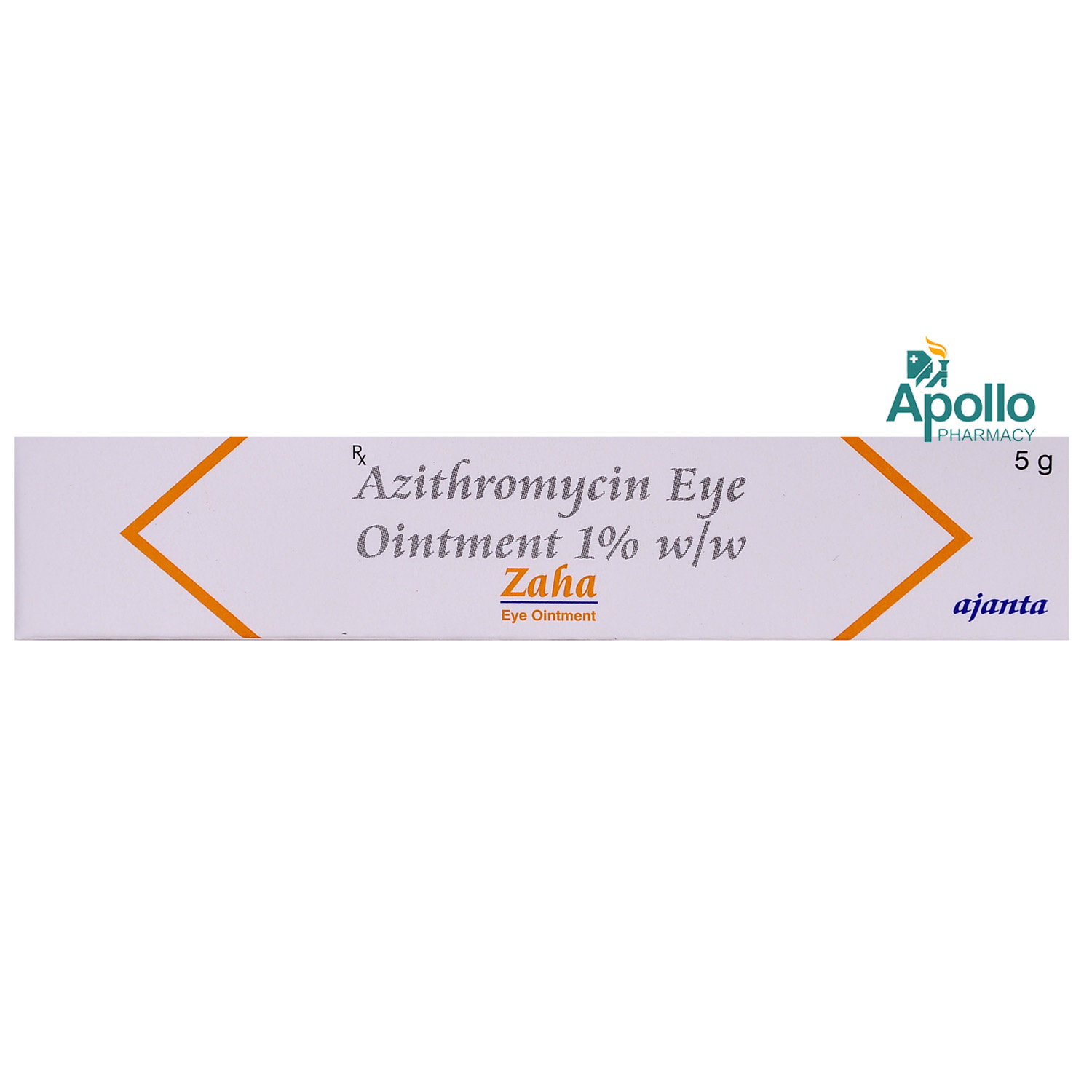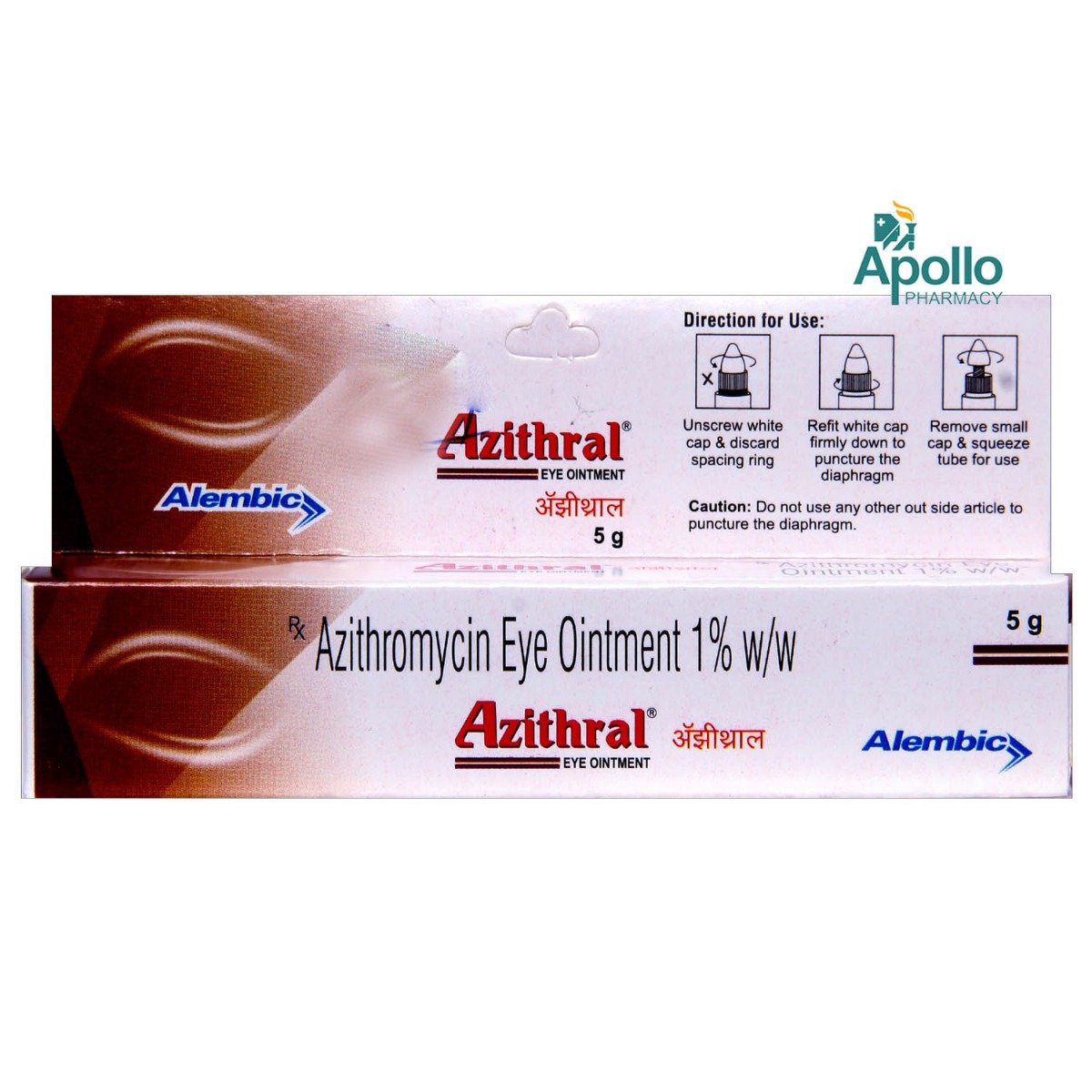- Home
- Olithro Eye Ointment
Olithro Eye Ointment Substitute
Olithro Eye Ointment Substitute
Medicine Composition:
AZITHROMYCIN-1%W/WAll Substitutes & Brand Comparisons
RX
Out of StockAyzeecon Eye Ointment
₹80.75
(₹14.53/ 1gm)
29% CHEAPERRX
Out of StockAzqure 1% Eye Ointment
Nri Vision Care India Ltd
₹85
(₹15.3/ 1gm)
26% CHEAPERRX
Estocin Eye Ointment 5 gm
Sunways (India) Pvt Ltd
₹102
(₹18.36/ 1gm)
11% CHEAPERRX
Out of StockAzigift Eye Ointment 5 gm
Runyon Pharmaceutical Pvt Ltd
₹140
(₹28.0/ 1gm)
35% COSTLIERRX
Optithrocin Ointment 5 gm
Entod Pharmaceuticals Ltd
₹159
(₹28.62/ 1gm)
38% COSTLIERRX
Azcape Eye Ointment 5 gm
Neomedix Healthcare India Pvt Ltd
₹154.5
(₹30.9/ 1gm)
49% COSTLIERRX
Zaha Eye Ointment 5 gm
Ajanta Pharma Ltd
₹182
(₹32.76/ 1gm)
58% COSTLIERRX
Azithral Eye Ointement 5 gm
Alembic Pharmaceuticals Ltd
₹178
(₹35.6/ 1gm)
71% COSTLIER

When Should You Consider Switching from Olithro Eye Ointment?
Patients may explore substitutes in the following scenarios:
- High monthly cost of Olithro Eye Ointment
- Non-availability in local pharmacies
- Generic recommendation by a doctor
- Side effects or better tolerability with alternatives
What to Know Before Switching
Before you switch from Olithro Eye Ointment to another medicine, here are some important points to keep in mind:
Same salt, different brands:
Most substitutes contain the same active ingredient - AZITHROMYCIN-1%W/W, but the fillers, coating, or manufacturing quality may vary slightly.
Consult your doctor first:
Even if the salt is the same, your doctor can confirm if the substitute is right for your condition, dosage, and health history.
Watch out for allergies or reactions:
Some people may react differently to certain brands due to inactive ingredients. If you notice any side effects, inform your doctor immediately.
Price ≠ effectiveness:
A lower-priced substitute doesn't mean it's less effective. Many generic medicines work just as well as branded ones.
Check the dosage form and strength:
Always match the substitute’s strength (e.g., 5mg, 10mg) and form (tablet, capsule, syrup) with what your doctor prescribed.
Uses
Olithro Eye Ointment is used in the treatment of bacterial eye infections. The detailed uses of Olithro Eye Ointment are as follows:
- Treatment of Bacterial Conjunctivitis: Olithro Eye Ointment helps treat bacterial conjunctivitis by reducing redness, swelling, and discharge caused by the infection.
- Management of Trachoma: These drops effectively manage trachoma, a bacterial eye infection that can lead to serious complications if not treated.
- Treatment of Blepharitis: Azithromycin eye drops may be used to treat blepharitis, an inflammation of the eyelid margins caused by bacteria.
- Relief from Eye Infections: They help relieve symptoms of various bacterial eye infections, supporting healing and improving comfort.
Medicinal Benefits
- Olithro Eye Ointment offers effective treatment for bacterial eye infections by rapidly reducing symptoms such as redness, irritation, swelling, and discharge.
- It works by eliminating the bacteria causing the infection, providing relief, and promoting healing.
- With a convenient dosing regimen, Olithro Eye Ointment is a well-tolerated option for managing bacterial conjunctivitis and restoring eye health.
- Olithro Eye Ointment is not effective in treating viral infections of the eye.
FAQs
The substitutes of Olithro Eye Ointment contain the same active salt(s) - AZITHROMYCIN-1%W/W. However, they may differ in price, manufacturing quality, and inactive ingredients. Speak to your doctor to find a suitable option.
Switching to a generic substitute medicine in the place of Olithro Eye Ointment is often possible if it has the same salt, strength, and dosage form. But always check with your doctor before making any changes to your medication.
Generics versions of Olithro Eye Ointment are typically more affordable because they don’t include the original brand's research, development, and marketing costs. They contain the same active ingredient and are approved for safety and effectiveness.
Most people don’t notice any difference. However, some may react to different fillers or coatings. If you notice any unusual symptoms after switching, consult your doctor.
Make sure the new medicine has the same active salt, strength, dosage form. Always confirm the change with your doctor or pharmacist.
Substitutes of Olithro Eye Ointment meet the same safety and efficacy standards as Olithro Eye Ointment, but small differences in absorption or formulation can exist. A doctor can help you choose the right one for your needs.
Yes. Substitutes of Olithro Eye Ointment may vary in color, size, or shape due to differences in manufacturing and branding, but this does not affect how they work.
Yes, it’s generally safe to switch between multiple substitutes of Olithro Eye Ointment if they have the same salt and strength. However, always inform your doctor so they can monitor how your body responds.
Yes, many people safely use substitutes of Olithro Eye Ointment for long-term treatment. Just ensure it’s done under medical supervision.
If your symptoms stay under control or lab results remain stable, the substitute for Olithro Eye Ointment is likely working well. Regular follow-ups with your doctor are important.
Absolutely. Even with the same salt, small differences can affect how your body responds when switching from Olithro Eye Ointment to its substitute. Always consult your doctor before switching.
Olithro Eye Ointment belongs to the class of macrolide antibiotics used to treat bacterial infections of the eye, such as bacterial conjunctivitis and trachoma conjunctivitis.
Olithro Eye Ointment works by killing the bacteria that cause infections. Thus, Olithro Eye Ointment treats bacterial eye infections.
Use Olithro Eye Ointment only for the duration recommended by your doctor. Please do not use it for more than the recommended duration. Inform your doctor if the eye infection does not improve after three days of using Olithro Eye Ointment.
Olithro Eye Ointment can be used with other eye medications if prescribed by the doctor. Maintain a gap of 15 minutes between Olithro Eye Ointment and other eye medications. Use other eye medications first, wait for 15 minutes and then use Olithro Eye Ointment.
Do not wear contact lenses while using Olithro Eye Ointment. Remove contact lenses before using Olithro Eye Ointment. Until the infection is cleared, it is advised to wear spectacles and avoid contact lenses.
Olithro Eye Ointment may cause temporary blurred vision. Avoid driving or operating machinery until your vision returns to normal to ensure your safety.




